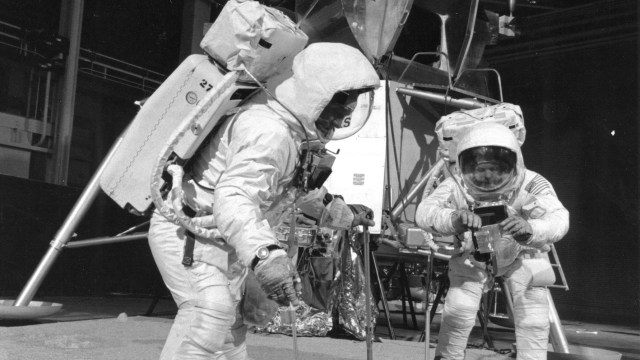The Future Of Astronomy: NASA’s James Webb Space Telescope
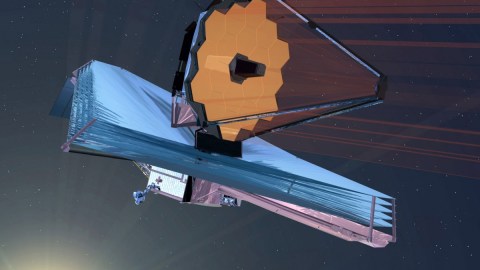
How the biggest NASA mission of the decade will solve some of the Universe’s greatest mysteries.
“Now the world has gone to bed,
Darkness won’t engulf my head,
I can see by infrared,
How I hate the night.” –Douglas Adams
With every extra inch of aperture, every extra second of observing time, and every extra atom of atmospheric interference you remove from your telescope’s field-of-view, the better, deeper and more clearly you’re able to see the Universe. When the Hubble Space Telescope began operation in 1990, it ushered in a new era in astronomy: that of space-based astronomy. No longer did we have to fight with the atmosphere; no longer did we have to worry about clouds; no longer was electromagnetic scintillation a problem. All we needed to do was point our telescope at the target, stabilize it, and collect photons. In the 25 years since, we’ve began to cover the entire electromagnetic spectrum with our space-based observatories, getting our first true glimpse of what the Universe really looks like in every wavelength of light.

But as our knowledge has increased, so has our sophisticated understanding of what the unknowns are. The farther we look away in the Universe, the farther back in time we look as well: the finite amount of time since the Big Bang coupled with the finite speed of light ensures that there’s a limit to what we can see. Moreover, the expansion of space itself works against us, by stretching the wavelength of the emitted starlight as it travels through the Universe towards our eyes. Even the Hubble Space Telescope, which gives us the deepest, most spectacular view of the Universe we’ve ever uncovered, is limited in that regard.
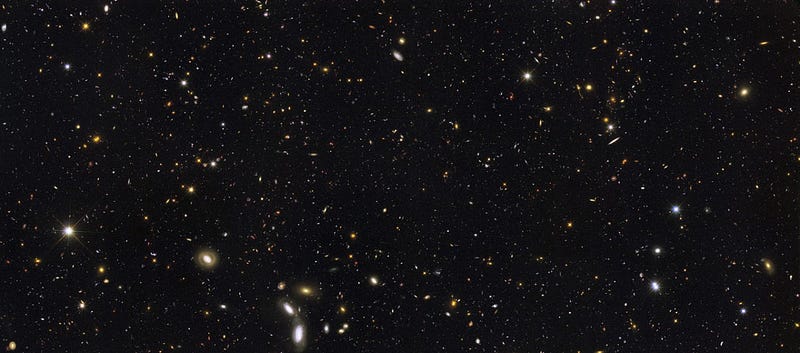
Hubble is an amazing piece of equipment, but it’s fundamentally limited in a number of ways:
- It’s only 2.4 meters in diameter, limiting its resolving power the farther away we look in space.
- Despite being coated in reflective materials, it still spends all of its time in direct sunlight, which heats it. This heat means that it can’t observe wavelengths of light longer than about 1.6 microns, due to thermal effects.
- And the combination of light-gathering limitations and the wavelengths to which it’s sensitive means that it can “only” see back to galaxies that are about 500 million years old.
Now, these galaxies are beautiful, distant and from when the Universe was just around 4% of its current age. But we know that stars and galaxies exist from even earlier times.
If we want to view those, we need greater sensitivity. And that means going to longer wavelengths, at lower temperatures, and with a larger telescopethan Hubble, all from space. That’s the way to do it. And that’s why we’re building the James Webb Space Telescope.
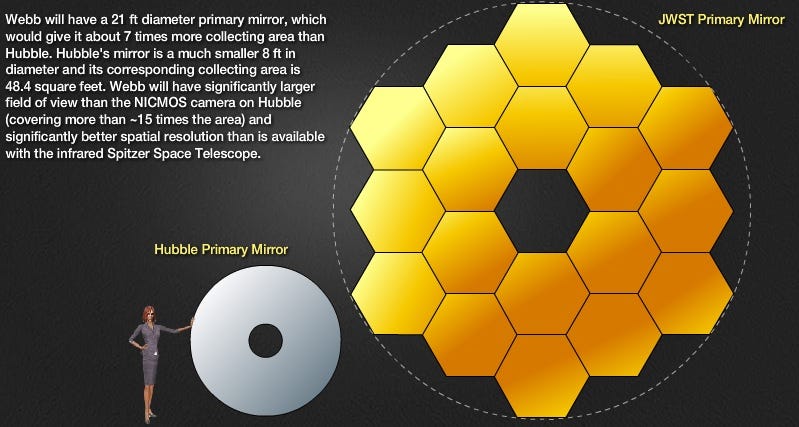
James Webb Space Telescope (JWST) is designed to overcome exactly these limitations: with a 6.5 meter diameter light-gathering area (grabbing more than seven times the light that Hubble can), the capability to do ultra-high resolution spectroscopy from about 600 nanometers to 6 microns (some four times the wavelength Hubble can grab), the ability to do mid-infrared observing to higher sensitivity than ever before, and to both passively cool everything down below the temperature of Pluto and to actively cool the mid-infrared instruments down to just 7 K, JWST should be able to do the science that no one else has been able to do.
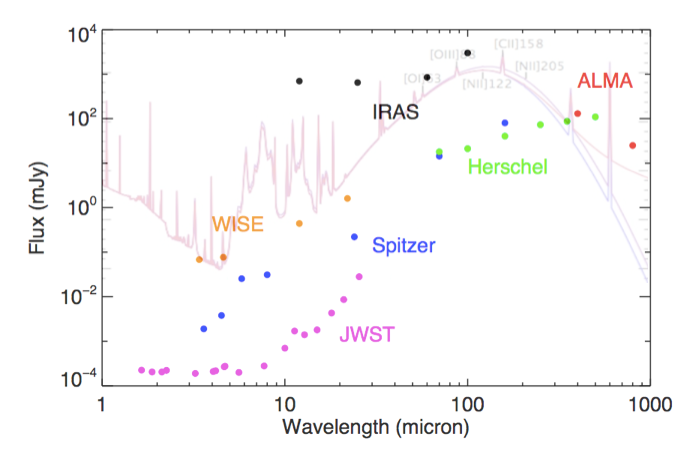
In particular, this means:
- observing the earliest galaxies ever to form,
- seeing through the neutral gas and probing the first stars and the reionization of the Universe,
- doing spectroscopic analysis of the very first stars (Population III stars) to form after the Big Bang,
- and possibly some amazing surprises, like uncovering how the earliest supermassive black holes and quasars formed in the Universe.
The science we’re bound to learn from JWST is unlike anything else we’ve ever learned, and that’s why it was selected as the flagship NASA mission of this decade: the 2010s.
From a technical standpoint, JWST is an incredible piece of work, and it’s all coming together beautifully. Those of you who’ve been following it for a long, long time might have, in the back of your mind, a distant memory of how the program went over budget and fell behind schedule, and was in danger of being cancelled. When new management stepped in, though, everything changed. The project was suddenly very tightly managed, allowances were made and budgeted for as far as mistakes, errors, setbacks and challenges, and thus far the JWST team has hit every single deadline and made every single deliverable on schedule and within budget. They’re slated for launch in 2018, and they’re not only on schedule, they’ve got a nine month cushion for when they planned to have everything assembled and launch-ready. There are four main pieces to JWST, and here’s the status on each one.

1.) The Optical Assembly. This includes all the mirrors; most spectacularly the eighteen primary, segmented gold mirrors that will be used to gather the distant starlight and focus it for the instruments to analyze. These mirrors are currently all complete and flawless, and are right on schedule as far as installation goes. (Mirror #14, shown above, was just installed on January 19th.) When it’s all complete, these mirrors will be folded up into a packaged array, launched more than a million kilometers from Earth to the L2 Lagrange point, and then robotically unfolded to create that honeycomb-like structure that will gather that ultra-distant light for years to come. It’s truly a thing of beauty and the successful result of a herculean effort by many.
2.) The science instruments. There are four of these, and they are all 100% complete! They are:
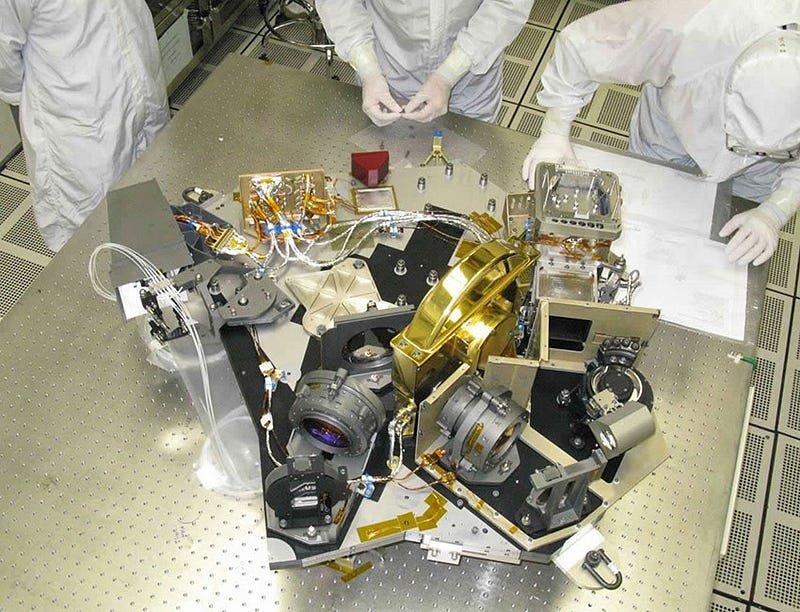
- The Near Infrared Camera, James Webb’s primary imaging camera. Extending over an order of magnitude of wavelengths, from visible, orange light deep into the infrared, it should be able to give us unprecedented views of the earliest stars, the youngest galaxies in the process of formation, young stars in the Milky Way and nearby galaxies, hundreds of new objects in the Kuiper Belt, as well as being optimized for directly imaging planets around other stars. This will be the main camera used by most observers on JWST.
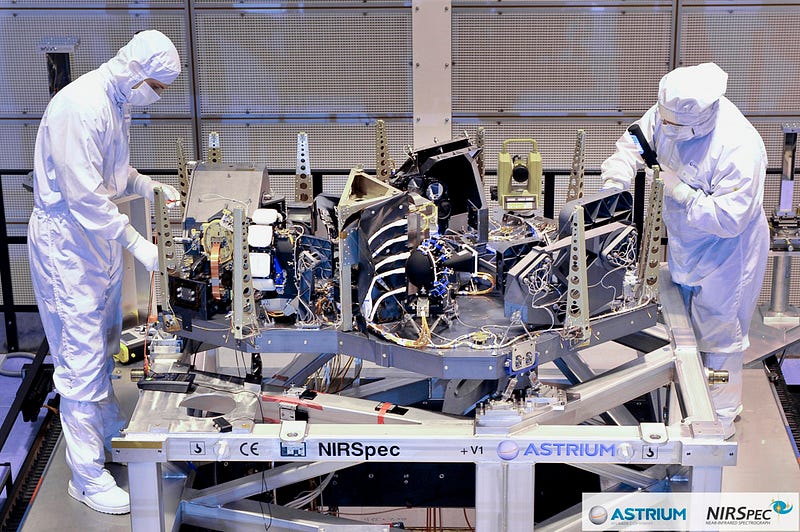
- The Near Infrared Spectrograph, which not only breaks the light from individual objects apart into its individual wavelengths, it’s designed to do this for more than 100 separate objects at once, in a single image! This workhorse will be Webb’s all-purpose spectrograph, capable of three distinct modes of spectroscopy. It was built by the European Space Agency, but with many components, including the detectors and multi-shutter array, provided by Goddard Space Flight Center/NASA. This instrument has been robustly tested and is complete.
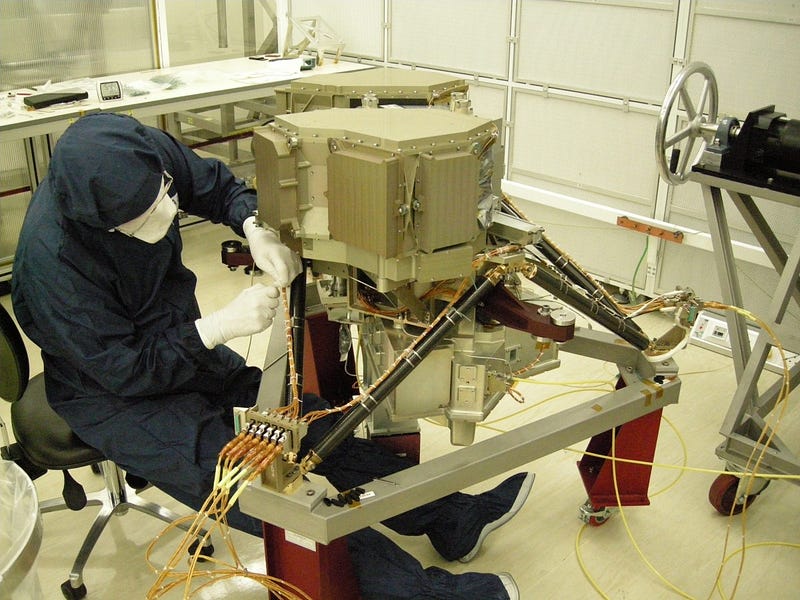
- The Mid-Infrared Instrument will be the one most useful for wide-field broadband imaging, meaning that it will return the most visually striking pictures of all of Webb’s instruments. Scientifically, it will be most useful for the measurement of proto-planetary disks around incredibly young stars, measuring/imaging Kuiper Belt objects to unprecedented accuracy, and dust that has been warmed by starlight. This will be the only instrument that’s cryogenically (i.e., with extra on-board coolant) cooled: down to 7 K. This will improve on what, for example, the Spitzer Space Telescope saw by about a factor of 100.
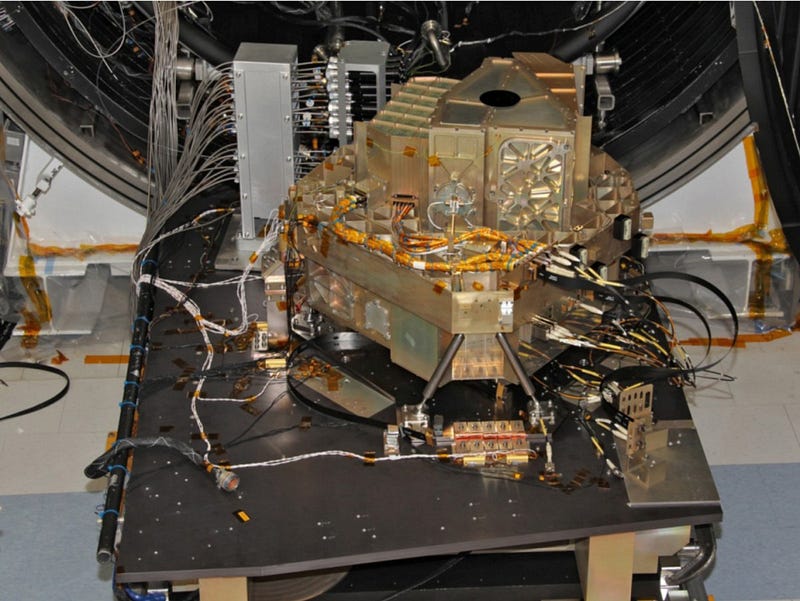
- And the last of the four instruments, the Near-InfraRed Imager and Slitless Spectrograph (NIRISS), will allow Webb to perform wide-field spectroscopy at near infrared wavelengths (1.0–2.5 microns); single-object grism spectroscopy over visible and infrared wavelengths (0.6–3.0 microns); aperture-masking interferometry between 3.8–4.8 µm (where we expect to see the first stars and galaxies); and broad-band imaging across its entire field of view. This is the lone instrument that was built by the Canadian Space Agency, and after passing cryogenic testing, it, too, is complete and integrated within the entire instrument module.
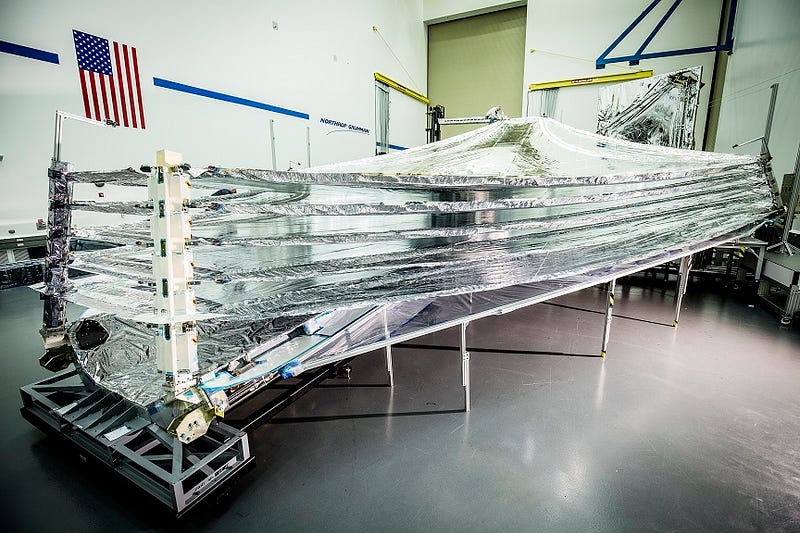
3.) The Sunshield. This is new! This is one of the scariest parts of any mission: the brand new stuff. Rather than cooling the entire spacecraft actively, with some type of disposable/consumable coolant, JWST uses a brand new technology: a 5-layer sunshield, which will deploy and block the heat from the Sun from the entire spacecraft. These five 25-meter-long sheets will be held taut, in place, by titanium rods that will deploy when the entire spacecraft unfolds. The Sunshield was tested extensively in 2008 and 2009, and full-scale models for laboratory testing have passed everything they’ve been subjected to here on Earth. It’s truly an innovative thing of beauty.
This is also an incredible concept: you don’t just block the light from the Sun and place the telescope in shadow, you make sure that all the heat is radiated away in the direction opposite to the telescope! The five-layered structure in the vacuum of space means that each progressive layer gets cooler and cooler as it approaches equilibrium. While the outermost layer is going to be quite a bit warmer than the Earth’s surface temperature — somewhere around 350–360 K — by time you get to the end of the fifth layer, the temperature should be down to right around 37–40 K, or cooler than the surface of Pluto during the night.
In addition, there are some tremendous precautions in place to protect against the catastrophic environment of deep space. You see, one of the things everyone needs to worry about are tiny rocks — pebble-sized, grain-of-sand-sized, dust-mote-sized and even smaller — that are flying about through interplanetary space at tens or even hundreds of thousands of miles per hour. These micrometeroids can rip and punch tiny, microscopic holes in everything they encounter: spacecraft hulls, astronaut suits, telescope mirrors and more. While the mirrors would only be dented or dinged, slightly reducing the amount of “good light” available, the sunshield could develop a tear that runs from end-to-end, rendering an entire layer useless. So they did something brilliant to fight this.
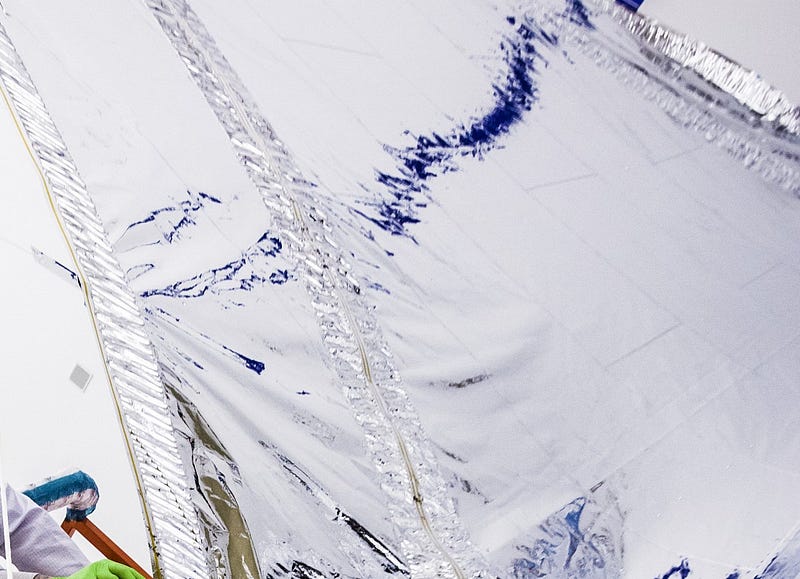
They compartmentalized every bit of the sunshield, so that if a small tear emerges in one, or two, or even three pieces, it won’t necessarily render the entire layer useless by spreading, the way a crack in your car’s windshield might spread. Instead, the sectioning should keep the general structure intact, an important precaution against degradation. And finally…
4.) The spacecraft bus, assembly and control systems. This is actually the most routine component, as all space telescopes and science missions need these. JWST’s will be unique, but this is also completely ready. All we need to do is finish the sunshield, finish installing the mirrors, put the whole thing together with the appropriate testing, and we’ll be ready for launch in two years.
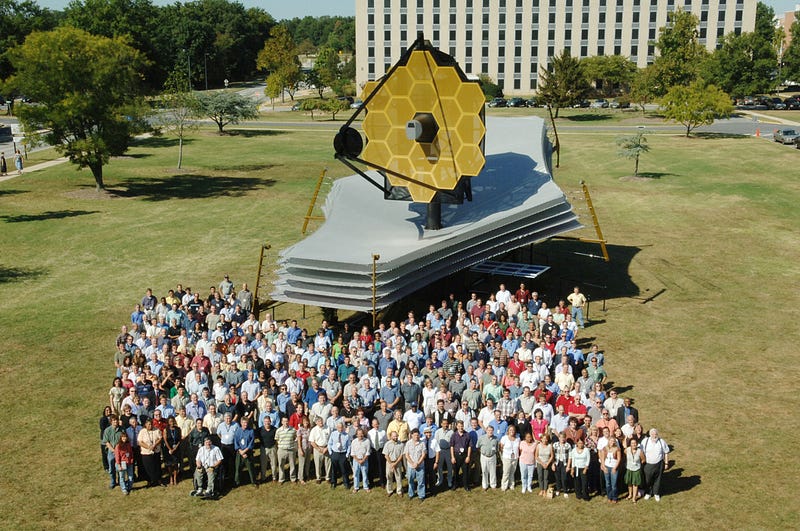
If things go right, we’re in for the next great scientific leap forward. The curtain of neutral gas — currently obscuring our view of the earliest stars and galaxies — will be pulled back by this telescope’s infrared capabilities and huge light-gathering power from space. It will be the greatest, most sensitive telescope over a huge wavelength range, from 0.6 microns to about 28 microns (where the human eye can see from about 0.4 to 0.7 microns), ever constructed. If it launches, deploys and operates properly, as it’s expected to, we could get a full decade of observations out of it. According to NASA:
Webb’s mission lifetime after launch will be between 5–1/2 years and 10 years. The lifetime is limited by the amount of fuel used for maintaining the orbit, and by the lifetime of the electronics and hardware in the harsh environment of space. Webb will carry fuel for a 10-year lifetime; the project will do mission assurance testing to guarantee 5 years of scientific operations starting at the end of the commissioning period 6 months after launch.
The primary limiting factor is the amount of on-board fuel, required to keep the telescope operating, in orbit, and pointing accurately at its targets. When that fuel runs out, it will drift away from the L2 Lagrange point, entering a chaotic orbit in the vicinity of Earth.
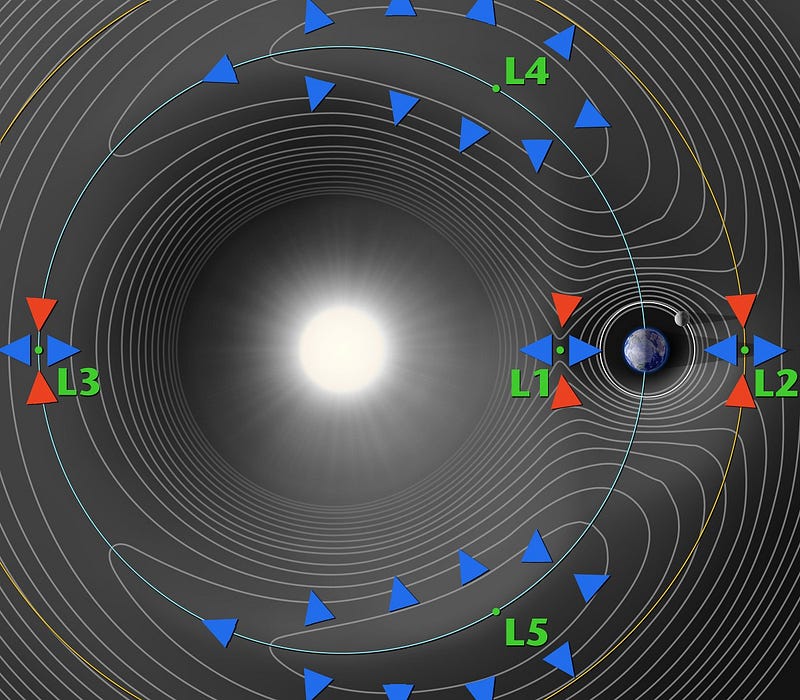
Other things that could fail are:
- degradations of the mirrors, which will impact the amount of light gathered and will create image artifacts, but which will still allow the telescope to be usable,
- failure of part or all of the sunshield, which will increase the telescope’s temperature and narrow the usable wavelength bands to the very near infrared (out to only 2–3 microns),
- and the coolant on the mid-IR instrument, which is consumable; this would render the mid-IR instrument unusable but wouldn’t affect the other instruments (from 0.6 to 6 microns).
The nightmare scenario is that the telescope doesn’t launch or deploy properly, and that’s exactly what the tests being done (and passed, by the way) ensure against.
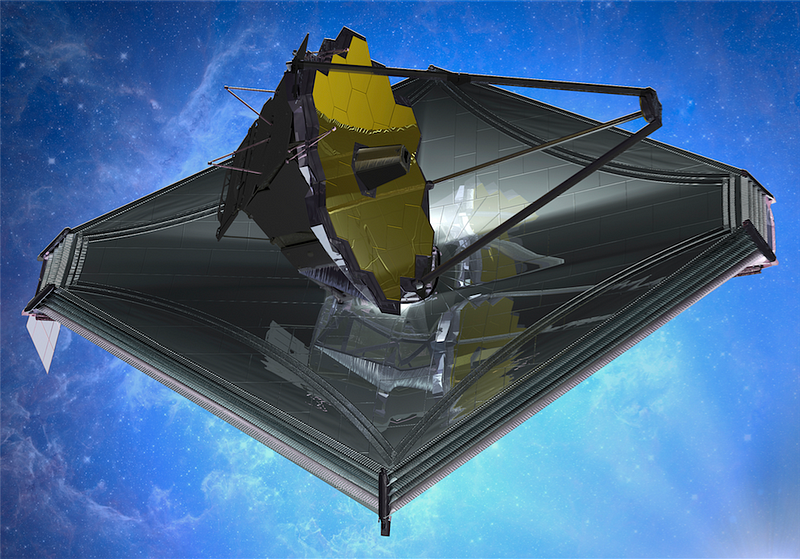
If JWST works as expected, it’s carrying enough fuel on-board that it should operate from 2018 through 2028, and although it’s never been done, the potential exists for a robotic (or crewed, if the technology gets developed by then) re-fueling mission to L2, which could increase the telescope’s lifetime by another decade. Just as Hubble’s been in operation for 25 years and counting, JWST could give us a generation of revolutionary science if things work out as well as they could. It’s the future of astronomy, and after more than a decade of hard work, it’s almost time to come to fruition. The future of space telescopes is almost here!
Leave your comments on our forum, and check out our first book: Beyond The Galaxy, available now, as well as our reward-rich Patreon campaign!





